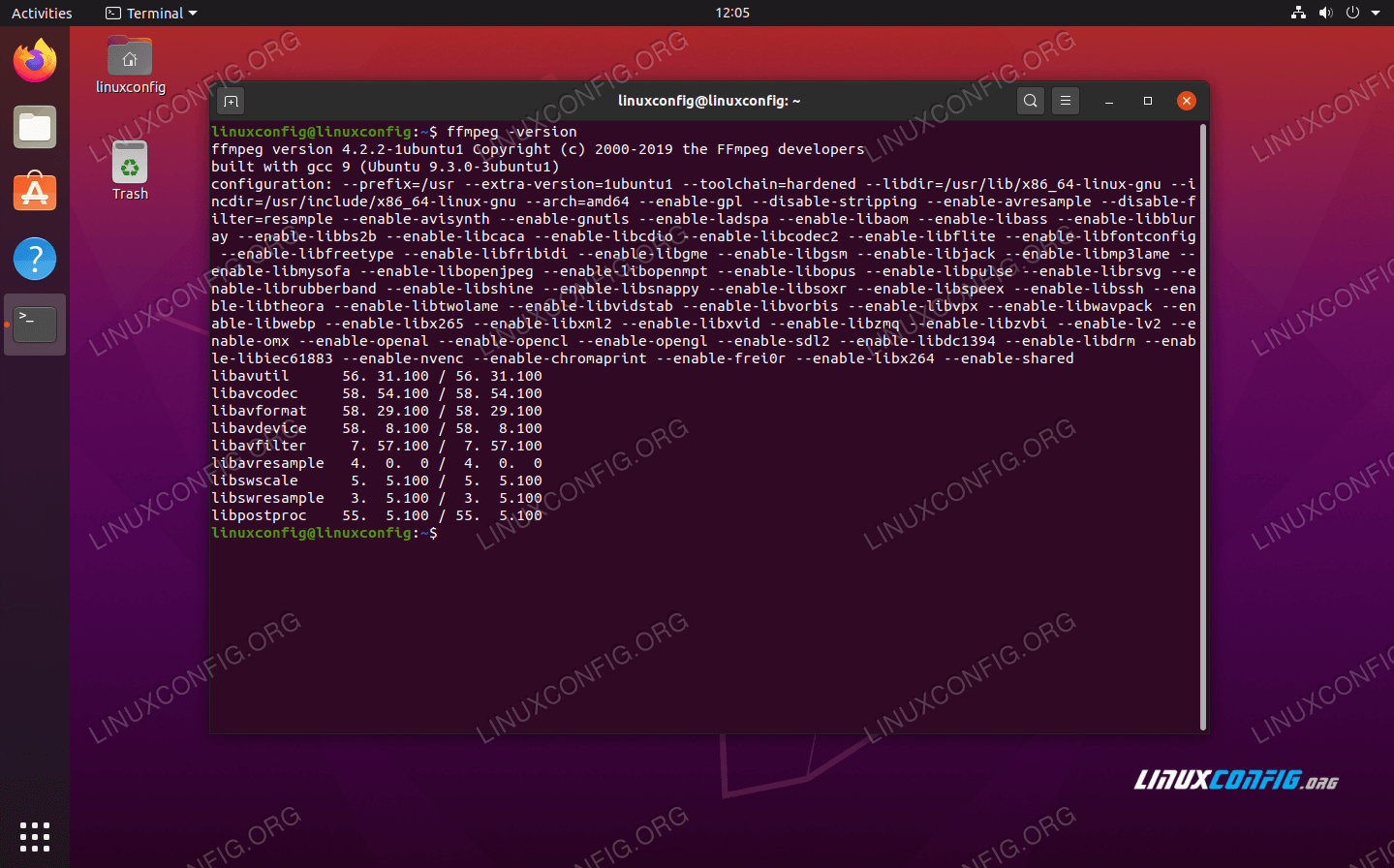

Had to find a similar-looking font to substitute throughout the document at the last minute.
INSTALLING FFMPEG WINDOWS PDF
(Ran into the same situation with a multi-page program book where the font could be included, but when printed, it turned out that the font was prohibited by the font creator from being used in a PDF document. Or use a nice standard font like Times New Roman in producing the web page, but of course that ship has sailed. That’s a simple setting on your PDF-producing software. Zahl, could print it from your original, using your own PDF printer, and making sure the fonts are included with the PDF document so it can be read and printed out. It might be possible to reverse-engineer the web page by copying all the text into a Notepad document, pasting it together with the photos in some kind of page program like CorelDraw and print it from that, but that’s a lot of work. I suspect the problem is that a mutant font was used for the text on the web page, one that has no equivalent in a standard computer, and that text is all that the PDF printer could interpret. You open them in Adobe Acrobat or Acrobat Reader.

If you weren’t successful, just post a comment below and I’ll help you out :) \imgs\image%04d.png – outputs the images to a folder (the folder must already exist!)įfmpeg -i input.mov -vf deshake output.movįfmpeg -i left_video.mov -vf " scale=iw/2:ih/2, pad=2*iw:ih movie=right_video.mov, scale=iw/2:ih/2 overlay=main_w/2:0 " sidebyside.mov But if that sounds like too much hard work, here’s my own personal reference I keep to remind me of common tasks:įfmpeg -i frame_%04d.png -c:v h264 test.mp4 – ‘%04d’ is the padding, like ‘frame_0001.png’įfmpeg -i frame%04d.png -c:v libx264 -preset veryslow -qp 0 vid.mkvįfmpeg -i frame%04d.png -c:v libx264 -preset ultrafast -qp 0 vid.mkv – larger file size, but quicker to encodeįfmpeg -i frame%04d.png -c:v prores vid_prores.movįfmpeg -i frame%04d.png -c:v qtrle qtrle.mov – possibly lossless compressionįfmpeg -i frame%04d.png -c:v libx264 -b:v 1M -c:a aac -r 10 output.mp4 – ‘-r 10’ specifies a framerate of 10 fpsįfmpeg -i frame%04d.png -c:v libvpx -b:v 2M -c:a libvorbis -r 10 output.webmįfmpeg -i frame%04d.png -vf scale=680:-1 -c:v libvpx -b:v 2M output.webm – 680p (auto height), no audioįfmpeg -i video.avi. There’s really an endless number of things you can do, so have a look at the documentation some time. Now you can play around with all sorts of things, like converting an image sequence into a video, a video into an image sequence, rotate and scale videos, discover information about a video, stabilize that shaky video you took at you Great Aunt’s 4th wedding, stream the webcam you planted in your girlfriend’s ex-boyfriend’s bedroom, or convert your 250 frame cube render to a super-crispy lossless h264 of unparalleled awesomeness. If all is well – congratulations, it’s installed! If it still tells you that it doesn’t recognize the command, double check that you successfully added the ffmpeg bin folder to the system path. Once you’ve got a console open, check that FFmpeg is installed properly by typing ffmpeg -codecs, which will show you all the codecs you have access to, including audio and video. Shift+Right Click in a folder (without any files selected) and choose Open command window here.Hit Win+R to open the Run utility and type cmd there.Search in the start menu for command prompt or just cmd.Since FFmpeg is a command-line program, we’re going to need to open a command line!


 0 kommentar(er)
0 kommentar(er)
